Self-Publishing Checklist: The Random No One Tells You, Part III
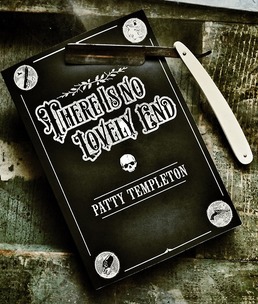 In Part One of this series, we looked at Firming Out Your Expectations, Picking Your Publisher, and how to do a Reality Check on Your Book Format.
In Part One of this series, we looked at Firming Out Your Expectations, Picking Your Publisher, and how to do a Reality Check on Your Book Format.
In Part Two, we unraveled the mysteries of Finding or Commissioning Art, Merchandise, and Hiring a Proofreader.
Still with me? Then take a deep breath, ’cause we’re going to take your book in for a three-point landing in Part III, starting with how to Upload your book.
7. Upload Your Book
- Do you want to buy a block of ISBNs? Do you want to have a custom ISBN? Do you want a free ISBN?
- Do you want your POD publisher listed as your publisher or do you want to create your own imprint?
- Is your back of jacket summary ready?
- Is your author bio and photo ready?
- Have you set up your Amazon author page?
- Do you have an excerpt picked out for your website and Amazon?
- What are the keywords (categories) that best describe your book?
- What is your genre?
- What is the price of your print book? What about the ebook?
- How the hell do you turn a Word doc into a PDF? (Super easy! LOOK HERE or HERE)
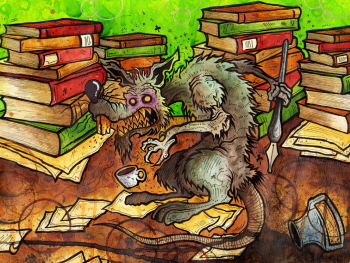 How terrifying. How exhilarating. You hit upload. The PDF of your manuscript goes into the POD site. Your cover art has been uploaded. Now what? Now they ask you all the questions about trim and bleed and WHAT ARE TRIM AND BLEED?
How terrifying. How exhilarating. You hit upload. The PDF of your manuscript goes into the POD site. Your cover art has been uploaded. Now what? Now they ask you all the questions about trim and bleed and WHAT ARE TRIM AND BLEED?
Trim is the size of the book.
Bleed is how far the type extends on your page.
Then there’s the price and all the other random questions you have to answer. Go slow. It’s gonna be all right.
A few guidelines, if you don’t care if your POD site is listed as your publisher, then you don’t have to customize your ISBN or create an imprint. If you do care, then you are going to have to shift out more cash for a custom ISBN (either bought through Bowker or your POD company). One reason people care if their POD site is listed as their publisher is because it is a dead giveaway that they are self-published. In some circles, being self-published is tantamount to lesser quality. Additionally, self-published works cannot get CIP from the LOC.
Wait. What? CIP is Cataloging-in-Publication data. The LOC is the Library of Congress. CIP is the data block that libraries use to catalog your book.
The LOC will not supply self-published authors with CIP. The LOC will not supply small presses that have published less than 3 books by authors other than themselves with CIP.
SO WHAT DO YOU DO? How do you make your book catalogable (Catalogable? What an awful/iffy word. Going with it anyways) to libraries?

If you are self-published, you can still get an LCCN… which is a Library of Congress Control Number. A LCCN assigns a cataloging number to your book. It can only be attained BEFORE your book goes live.
You can get PCIP data. PCIP is Publisher Cataloging in Publication data. This is a data block created by a cataloging librarian. This information should be placed on your copyright page. It will incorporate your ISBN and your LCCN.
People are torn on whether self-publishers need PCIP info. My take is this: if it makes a librarian more likely to put your book in their library because you already have a cataloging block (and – depending on the PCIP service you use, a WorldCat record [WorldCat = World Catalog]), then DO IT. It will cost you maybe a hundo, but hopefully pay out in the end. I used Five Rainbows through a colleague’s referral.
You need to think about all this BEFORE you hit publish. So! You go through the uploading-your-book process. If you work with CreateSpace, you can supply your own pre-bought ISBN or your can buy an ISBN from them. You can order a proof of your book. Then, while you wait for your first proof, order the LCCN stuff. With CreateSpace, you can have them go through the paperwork of getting you a LCCN or you can do it yourself through the LOC’s website. Order your PCIP info from a cataloging service. It should take about two to three weeks to get all this, but give yourself plenty of leeway.
Make sure that before you order your next proof, you insert the PCIP info on the copyright page.
8. Speaking of the Proofing Process
- Did you know your proof isn’t free?
- Do you have someone lined up to give your proof a read through?
- Have you tweaked the copyright page and any other errors found in the book?
- Have you cleared it with your artist that they will fix any faults found after the proofing process?
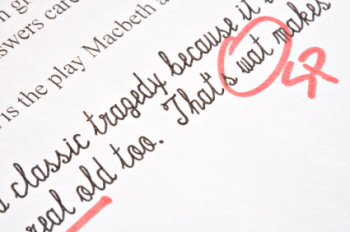 That’s right, you have to pay to read your own book. At least through CreateSpace. What BS, eh? Not even one freebie author copy. Oh well. You order your proof, you read it. You have a friend read it. Preferably, you have your proofreader read it – which means you should’ve cleared with them when you set up your agreement that they would be looking at your manuscript and your proof. You search for typos. You send it to you mom so she can make sure you didn’t F up your name on the spine. Do not be the only one to look over your proof. You cannot be trusted. Your eyes have been with this project for too long. They glaze over. They scan. NOT COOL. Give it to multiple detail-orientated readers who will point out typos.
That’s right, you have to pay to read your own book. At least through CreateSpace. What BS, eh? Not even one freebie author copy. Oh well. You order your proof, you read it. You have a friend read it. Preferably, you have your proofreader read it – which means you should’ve cleared with them when you set up your agreement that they would be looking at your manuscript and your proof. You search for typos. You send it to you mom so she can make sure you didn’t F up your name on the spine. Do not be the only one to look over your proof. You cannot be trusted. Your eyes have been with this project for too long. They glaze over. They scan. NOT COOL. Give it to multiple detail-orientated readers who will point out typos.
With each proof – let someone else look at the copy. You do not want to be the one with two missing periods at the end of important sentences. You don’t. It sucks. And those two periods I HAVE NO IDEA WHEN THEY WENT MISSING! Crap happens. Proofs are weird. Have other eyes.
You are basically ready to go live, right?
SWEET ERIS, THIS JUST GOT REAL!
::hand hovers over publish button::
Yup. You did it.
HOW SCARY!
HOW THRILLING!
BUT WAIT! Here are few more issues that should be floating around on your to-do lists or backbrain.
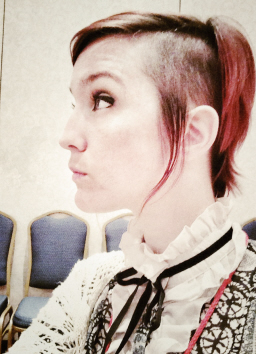
9. The Random Pile
- You should have a separate bank account for your writing income. It will make tax time easier. You need to attach your online sales to a bank account. Figure this out before you press publish.
- There are templates out there for your copyright page. (Here’s a good example.)
- Have you asked anyone to blurb you or your book? You should. Ask anyone of import that you know. Even if they seem out of your league, if you have met them on favorable occasions (whether online or in person), ask. Politely. Blurbs sell books. You should have them on your website, on your Amazon page, think about putting them in the front matter of your book.
- If you create an imprint, your imprint should have a website – separate from your author website.
- Bookmarks are a great freebie for cons and readings and for promotional stacks at bookstores, libraries, coffee shops, cons, etc.
- Your ebook is going to be INFINITELY easier to format than your print book, but don’t forget to put back matter in your ebook! It should be more than your About the Author. You should have links to your other works and your website, in the very least.
- Keep track of all of your receipts EVER. All of them. LCCN cost? Yes. PCIP cost? Yes. Proof copy and shipping? Yes. Number of copies given away to review sources and the postage to get them there? Yes. Keep EVERY RECEIPT because a heck of a lot of it is tax deductible. Make a folder in your email and/or documents to keep track of it all.
- YouTube is AWESOME when you are having formatting issues or CreateSpace issues. There are a million how-to videos dealing with self-publishing.
- Do NOT use the tab button for indenting your paragraphs. It will cause WICKED ISSUES when you create your ebook. Learn how to properly indent paragraphs.
- This article isn’t perfect, but it is helpful when thinking about margins and general manuscript set-up for the print edition.
- A final tip, fonts matter. They can cost you money or they can be free. Here is a good article on a few of the royalty-free, professional-looking fonts out there.
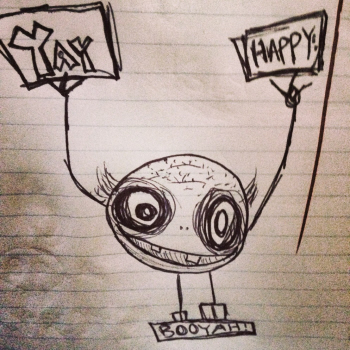 After all of that is considered… PRESS PUBLISH! Do it! Go for it! Don’t be terrified! Or do be terrified, but stomp that fear worm to smears and press publish anyways.
After all of that is considered… PRESS PUBLISH! Do it! Go for it! Don’t be terrified! Or do be terrified, but stomp that fear worm to smears and press publish anyways.
YOU CAN DO IT!
::fist bump::
::jump high five::
::glitter cannon:
It is time to bask in the glory of your sales. You can now afford everything on your Amazon and Etsy wishlists.
Wait. Where are you sales?
Oh, my beautiful darlings, now your job is to market the Damned Thing.
Good luck. May your publicizing go swiftly and catch like wildfire.
Patty Templeton is roughly 25 apples tall and 11,000 cups of coffee into her life. She wears red sequins and stomping boots while writing, then hits up back-alley dance bars and honky tonks. Her stories are full of ghosts, freaks, fools, underdogs, blue collar heroes, and never giving up, even when life is giving you shit. She won the first-ever Naked Girls Reading Literary Honors Award and has been a runner-up for the Mary Wollstonecraft Shelley Award. There Is No Lovely End is her first novel.
[…] last bit: Part 3 of 3 of my Self-Publishing Checklist went live. You can find it over here on Black […]